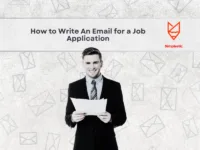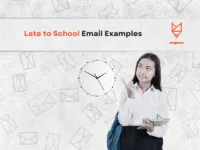When you leave a company, setting up an automatic reply is crucial for maintaining professionalism. A well-crafted automatic reply can inform colleagues, clients, and partners about your departure while providing alternative contacts for urgent matters. This practice ensures that communications continue smoothly in your absence, avoiding potential confusion.
Your automatic reply message should be clear and concise, reflecting your departure while offering necessary information. Including the date of your last working day and an alternative contact person is vital. This transparency helps others engage with the right individual and minimizes disruption.
Crafting a thoughtful automatic reply is an essential step in your offboarding process. It not only serves as a final communication touchpoint but also reinforces your professional image, making it an important consideration for anyone transitioning to a new role.
Automatic replies serve as a critical tool for maintaining communication after you leave a company. They inform contacts of your departure and guide them on what to do next.
Automatic vs. Manual Out-of-Office Messaging
Automatic replies are typically set up to trigger without your action. They send predefined messages to anyone who emails you. This feature ensures that your contacts receive immediate acknowledgment of their messages. In contrast, manual out-of-office replies require active engagement. You must remember to send emails or notifications when you are away. This method offers flexibility but can lead to missed communications if forgotten.
Benefits of Automatic Replies:
- Immediate communication
- Reduces confusion
- Provides alternative contact information
Using automatic replies can help manage expectations and ensure smooth transitions during organizational changes.
Setting Up Automatic Replies
Setting up automatic replies requires careful planning and attention to detail. You need to consider logistical aspects and align with your company’s policies.
Before Departure: Checklist
Before leaving your company, create a checklist to ensure you complete all necessary steps for setting up automatic replies. Start by informing your supervisor or HR about your moving date and intention to set up an automatic reply.
Next, prepare your message. Detail your last working day, alternative contact methods, and whom to reach for urgent matters.
Consider gathering any email addresses or details of tasks you need to delegate. It’s also wise to review any outstanding projects or responsibilities that require attention before your departure.
Email Client Automation Features
Familiarize yourself with the automation features provided by your email client. Most platforms, such as Outlook or Gmail, offer a straightforward way to set up an automatic reply.
Basic steps to follow:
- Go to your email settings.
- Find the “Out of Office” or “Automatic Replies” option.
- Enable automatic replies and set the date range for when you’ll be unavailable.
- Input your pre-prepared message.
Make sure to test your automatic reply before finalizing it. Send a test email to yourself to confirm that the message displays as intended.
Company Email Policy Compliance
Always align your automatic replies with your company’s email policy. Review any guidelines your organization has regarding out-of-office messages. Some companies might have specific formats, mandatory disclaimers, or restrictions on what can be shared in these messages.
Keep your message professional and concise. Avoid unnecessary personal details that may not align with company standards. Ensure that your message complies with confidentiality requirements and does not disclose sensitive information.
Following these steps will help ensure a smooth transition and proper communication in your absence.
Crafting Your Automatic Reply After Leaving
Creating an automatic reply after leaving a company is vital for maintaining professional relationships. Focus on the essential components, tone, clarity, and providing contact alternatives when drafting your message.
Essential Components
An effective automatic reply should contain clear information about your departure. Start with a polite acknowledgment that the email was received.
Next, state that you are no longer with the company. You can include your last working day if you prefer. It’s also important to indicate that you will not be responding to emails at this address. Finally, ensure to thank the sender for their understanding.
Tone and Language Guidelines
Use a professional and courteous tone throughout your message. Avoid language that may seem abrupt or dismissive.
Keep your sentences straightforward. This ensures that the reader feels respected and informed.
Consider using positive language to leave a good impression. Phrases such as “Thank you for your understanding” or “I appreciate your patience” can convey warmth and politeness.
Remember, your tone should reflect your professionalism, even without direct communication.
Ensuring Clarity and Brevity
Aim for clarity. Use simple language to prevent misunderstandings. Short sentences often communicate more effectively than longer, complex ones.
Limit your message to a few key points. This helps ensure the reader absorbs the essential details quickly.
For instance, sticking to three or four sentences is ideal. Bullet points can also be effective if you possess multiple key messages to convey.
Removing unnecessary jargon can further enhance readability. The goal is for the reader to quickly understand your situation.
Incorporating Contact Alternatives
If relevant, provide alternative contacts in your reply. This ensures that important emails receive attention, despite your departure.
List the names and email addresses of colleagues who can assist. Format it clearly, such as:
Make sure to secure approval from those individuals before including their contact details. This maintains professionalism and respects their privacy.
By offering alternatives, you ensure continuity for the correspondents and uphold your professional reputation.
Automatic Reply After Leaving
Template Email Responses
- Out of Office Reply
Subject: Out of Office
Thank you for your message. I am no longer with [Company Name] as of [Last Working Day]. For assistance, please contact [New Contact Name] at [Email] or [Phone Number]. - Referral Response
Subject: Transition Notice
Hello,
I appreciate your email. I have moved on from [Company Name]. Please reach out to [Contact Person] at [Email] for help with inquiries regarding my previous role. - General Acknowledgment
Subject: Thank You for Your Email
Thank you for reaching out. As of [Last Working Day], I am no longer part of [Company Name]. For any urgent matters, please connect with [Alternative Contact] at [Email]. - Project Handover
Subject: Important Notice
Hi there,
I wanted to inform you that I have left [Company Name]. For project-related questions, please get in touch with [Project Lead] at [Email]. They will assist you moving forward. - Personal & Professional Farewell
Subject: Farewell Message
Hello,
Thank you for your support during my time at [Company Name]. I am no longer there as of [Last Working Day]. You can reach [Alternate Contact] at [Email] for future inquiries.
Here are 15 examples of automatic reply messages you can use after leaving a company. Each message can be customized to fit your circumstances and the tone you wish to convey.
Example 1: Simple Departure Notification
Subject: Out of Office
Thank you for your email. I am no longer with [Company Name] as of [Last Working Day]. For assistance, please contact [New Contact Name] at [New Contact Email].
Best regards,
[Your Name]
Example 2: Transition to New Role
Subject: Out of Office
Hello,
I appreciate your email. I have transitioned from my role at [Company Name] as of [Last Working Day]. For inquiries related to my previous position, please reach out to [New Contact Name] at [New Contact Email].
Thank you!
Best,
[Your Name]
Automatic Reply After Leaving
Example 3: Personal Email Notification
Subject: Out of Office
Hi there,
Thank you for your message. I am no longer with [Company Name] as of [Last Working Day]. You can reach me at my personal email [Your Personal Email] for future correspondence.
Warm regards,
[Your Name]
Example 4: LinkedIn Connection Invitation
Subject: Out of Office
Hello,
Thank you for your email. I am no longer with [Company Name] as of [Last Working Day]. I would love to keep in touch! Please connect with me on LinkedIn [Your LinkedIn Profile Link].
Best wishes,
[Your Name]
Example 5: Future Opportunities
Subject: Out of Office
Hi,
I appreciate your email. I have left [Company Name] as of [Last Working Day]. If you wish to discuss future opportunities, please reach out to [New Contact Name] at [New Contact Email].
Thank you!
[Your Name]
Example 6: Short and Professional
Subject: Out of Office
Thank you for your email. I am no longer with [Company Name]. Please contact [New Contact Name] at [New Contact Email] for assistance.
Best regards,
[Your Name]
Example 7: Extended Absence Notification
Subject: Out of Office
Hello,
Thank you for reaching out. I have left [Company Name] as of [Last Working Day]. For any inquiries, please contact [New Contact Name] at [New Contact Email].
Wishing you all the best,
[Your Name]
Example 8: Gratitude and Farewell
Subject: Out of Office
Hi,
I appreciate your message. As of [Last Working Day], I am no longer with [Company Name]. I am grateful for the experiences and connections made during my time there. For assistance, please contact [New Contact Name] at [New Contact Email].
Warm regards,
[Your Name]
Example 9: Referral to New Contact
Subject: Out of Office
Hello,
Thank you for your email. I am no longer with [Company Name] as of [Last Working Day]. For inquiries, please reach out to [New Contact Name] at [New Contact Email].
Best,
[Your Name]
Example 10: Personal Note
Subject: Out of Office
Hi,
Thank you for your email. I have left [Company Name] as of [Last Working Day]. I am excited about my next adventure! For any assistance, please contact [New Contact Name] at [New Contact Email].
Best wishes,
[Your Name]
Example 11: Transitioning Responsibilities
Subject: Out of Office
Hello,
Thank you for reaching out. I am no longer with [Company Name] as of [Last Working Day]. For matters related to my previous role, please contact [New Contact Name] at [New Contact Email].
Thank you!
[Your Name]
Example 12: Update on Future Contact
Subject: Out of Office
Hi there,
Thank you for your message. I am no longer with [Company Name] as of [Last Working Day]. If you would like to stay in touch, feel free to connect with me on LinkedIn [Your LinkedIn Profile Link].
Warm regards,
[Your Name]
Example 13: Professional Transition
Subject: Out of Office
Hello,
I appreciate your email. I have transitioned out of my role at [Company Name] as of [Last Working Day]. Please reach out to [New Contact Name] at [New Contact Email] for any assistance.
Best,
[Your Name]
Example 14: Encouragement to Reach Out
Subject: Out of Office
Hi,
Thank you for your email. I am no longer with [Company Name] as of [Last Working Day]. I encourage you to reach out to [New Contact Name] at [New Contact Email] for any inquiries.
Thank you!
[Your Name]
Example 15: Farewell Message
Subject: Out of Office
Hello,
Thank you for reaching out. I have left [Company Name] as of [Last Working Day]. I want to express my gratitude for the connections made during my time there. For assistance, please contact [New Contact Name] at [New Contact Email].
Wishing you all the best,
[Your Name]
Automatic Reply After Leaving Timing
Setting the right duration and timing for your automatic reply is crucial to effectively manage communication after your departure. Consider how quickly you want responses to redirect and how long you need the message to remain active.
Immediate Activation
Activating your automatic reply immediately upon your departure ensures that anyone who contacts you will receive an instant notification. This rapid response can include crucial information, such as alternative contacts or follow-up procedures.
You can set this function through your email provider, with options typically available in account settings. Ensure that the message clearly states your absence and the duration for which the auto-reply will be in effect. Immediate activation helps your colleagues and clients adjust their communication expectations without delay.
Deciding on the Duration
Choosing the right duration for your automatic reply is essential. Generally, a duration of one to two weeks is appropriate for most situations, as it gives people time to adapt to your absence.
Consider your role and the nature of your work. If you were in a position that required ongoing communication, a longer duration may be necessary. Conversely, if you had infrequent contact, a shorter period could suffice. Additionally, consult with your supervisor to ensure that your choice aligns with company expectations and policies.
Scheduling End Date
You can set a specific end date for your automatic reply, which can be very helpful. This allows you to avoid leaving the message active longer than needed and helps in managing expectations.
Make sure to select a date that allows for a reasonable response time upon your return. If you are unsure about your return date, consider adding a note in the message indicating when you plan to check in. This transparency benefits everyone involved and helps maintain professional relationships.
Security and Privacy
When setting up an automatic reply after leaving a company, it’s crucial to address security and privacy concerns. You need to ensure that confidential information is protected and be aware of how email forwarding can impact security.
Restricting Confidential Information
In your automatic reply, limit the information you disclose. Avoid including sensitive data such as project details, client lists, or internal contacts. Providing too much information can lead to unintended consequences, including data breaches.
Consider using a template that focuses on directing inquiries to a colleague rather than outlining your previous responsibilities. Here’s a simple example:
- Subject: Out of Office
- Body: I am no longer with [Company Name]. For assistance, please contact [Colleague’s Name] at [Colleague’s Email].
This way, you maintain a professional tone while minimizing risks associated with disclosing confidential information.
Awareness of Email Forwarding
Know how emails are managed after your departure. Companies may enable forwarding of your emails to another employee. This means that your automatic reply could inadvertently provide access to information intended for your eyes only.
Confirm with your IT department how emails will be handled post-departure. If forwarding is active, reassure that your automatic reply does not disclose specifics. Communicate the importance of monitoring the transition to protect company interests.
By taking these precautions, you can help secure sensitive information during your transition out of the company.
Post-Departure Considerations
When you leave a company, it’s important to manage your automatic replies effectively. Considerations involve monitoring responses and ensuring that transition information is clearly communicated.
Monitoring Replies
After setting up your automatic reply, you may want to monitor any responses that come in. While you may not have direct access to your inbox, you can request an interim check from a trusted colleague who can review any urgent matters or messages that require follow-up.
Set clear guidelines for this colleague on how to handle inquiries. You might state specific actions to take, such as forwarding important messages to a designated person or responding to time-sensitive issues. Providing this support helps maintain relationships with clients and colleagues.
Transition and Handover Information
Your automatic reply should include key transition details. Specify who will take over your responsibilities. Include their contact information to streamline communication. This is essential for projects that were ongoing or require immediate attention.
Additionally, outline any important tasks still in progress. A brief bullet-point list can be effective here, highlighting critical deadlines or deliverables. Clear communication prevents confusion and ensures a smoother handover, allowing your team to maintain productivity during the transition.
Legal and Ethical Implications
When setting up an automatic reply after leaving a company, consider relevant legal and ethical guidelines.
Confidentiality: Ensure you do not disclose sensitive company information in your responses. Include a polite reminder about confidentiality in your message.
Data Protection: Be aware of data protection regulations, such as GDPR in the EU. Avoid sharing personal data or client information in your auto-replies.
Professionalism: Maintain a professional tone. Your message reflects on your former employer and can impact their reputation.
Misleading Information: Clearly state your departure date to avoid confusion. Misleading recipients can create misunderstandings.
Response Management: Consider directing inquiries to a colleague or a designated contact. This shows professionalism and ensures that important matters are addressed efficiently.
Avoiding Liability: Be cautious about any statements made. If you reference your role or responsibilities, ensure accuracy to prevent potential liability for misinformation.
Following these guidelines can help you navigate the complexities of legal and ethical implications effectively. Always prioritize clarity and professionalism in your communication.
Best Practices for Teams and Managers
Establish a clear policy on automatic replies when an employee leaves. Consistency helps manage expectations.
Encourage individuals to update their automatic reply messages before leaving. Suggested elements for the message include:
- Contact Information: Provide alternative contacts for urgent matters.
- Farewell Note: Include a brief, friendly message.
- Transition Information: Mention any ongoing projects or responsibilities.
Designate a team member to take over the departing employee’s responsibilities. Ensure the team knows who to contact for specific tasks.
Hold a team meeting to communicate the change. This can clarify roles and address any immediate concerns.
Maintain records of all automatic replies. This helps in tracking communication and updating team workflows as necessary.
Review and update your company’s automatic reply templates regularly. This ensures they remain relevant and effective.
Foster a culture where team members share knowledge about ongoing projects. This can lessen disruptions caused by employee departures.
Lastly, encourage feedback on the automatic reply process to make continuous improvements.




